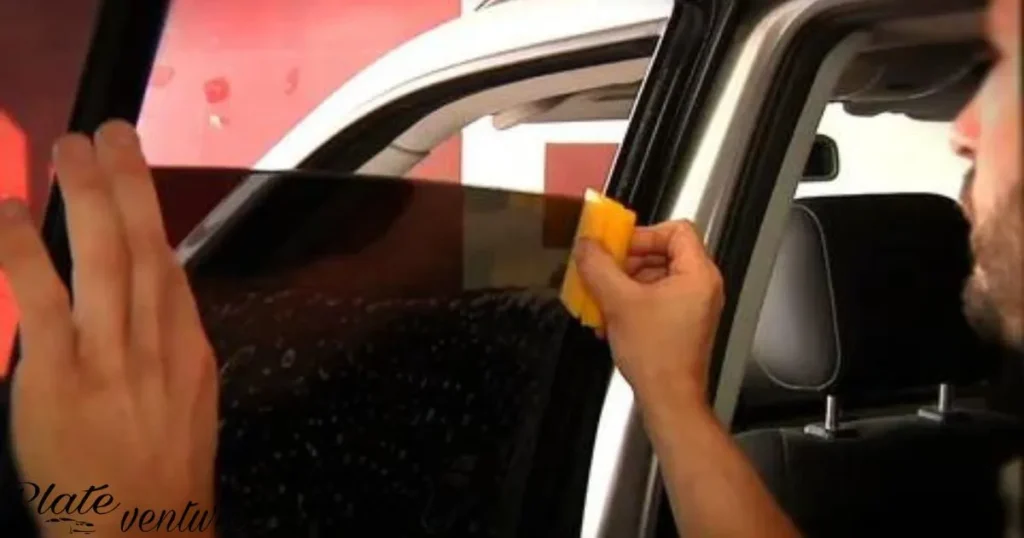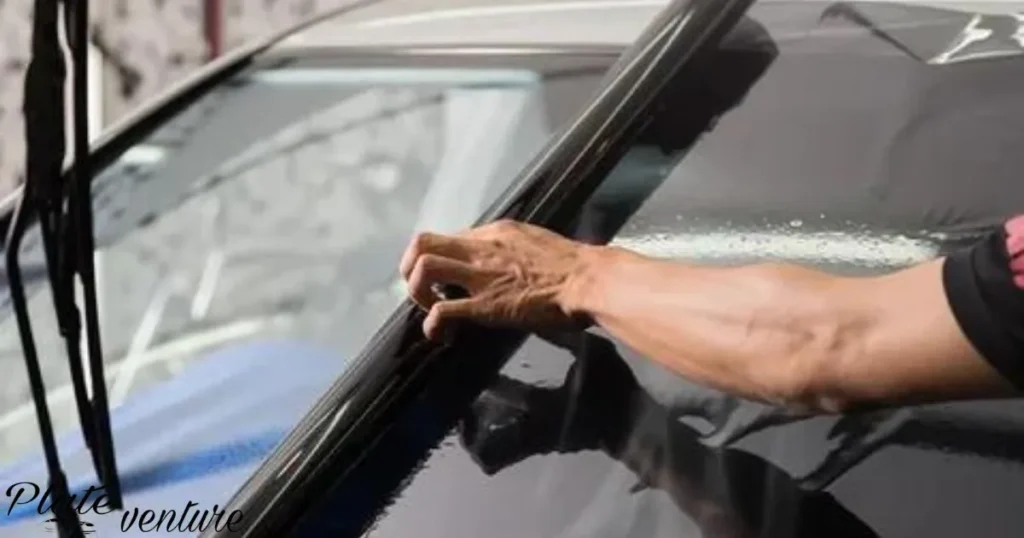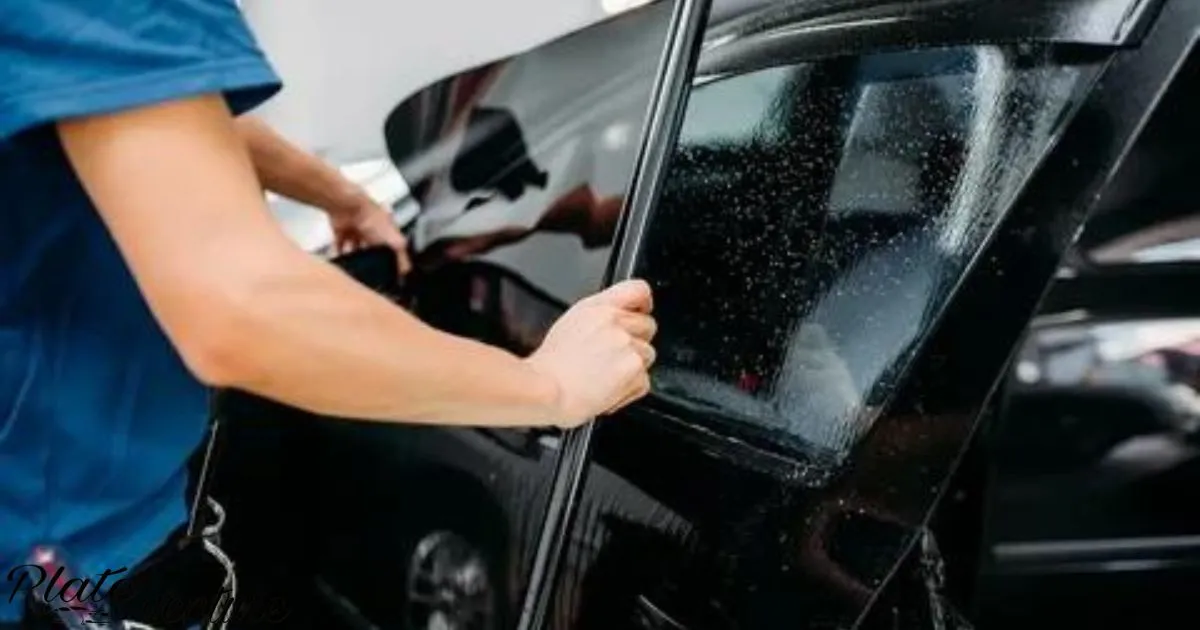Window tint is a film that can be installed on car windows to reduce glare and heat. The most common tint levels are 35 and 5 percent. 35 percent tint allows 35 percent of light to pass through the window.
How dark is 35 percent window tint? You may have wondered about how much light 35 percent car tint blocks. While it does not make the windows completely dark, it provides helpful sun protection without sacrificing safety or visibility.
A 35 percent tint is not extremely dark but does help take the harsh edge off of bright sunlight. It allows enough light inside the car that the tint will generally be considered legal for use on front side windows by state tinting laws. The tint creates a subtle darkening of the windows from the outside but does not heavily color or darken your view looking out.
Is 35% Car Tint Legal In My State?
Many states allow front side windows and windshields to be tinted to 35%. Laws vary by location so check your local regulations. 35% tint is a popular choice that balances visibility and sun protection within most state restrictions. Always research tint laws to avoid potential fines for illegal window shading.
Most states permit at least 35% light transmission through front side windows. The windshield usually must allow 70% light for safe visibility. Rear side windows and back windows can often be darker than 35% tint. Always verify your state’s exact tinting specifications to stay on the right side of the law.
What Can You See Through 35% Tinted Car Windows?
Through a window with 35% tint you can still see clearly outside during the day. Color recognition and details might be slightly muted compared to untinted glass. The tint creates a subtle shading from direct sun but does not block visibility especially in well-lit conditions.
At night, 35% tint does not significantly impair sight outside the vehicle. Headlights and street lamps allow you to identify objects, signs, Get Away With Tinted Windows In Nj and pedestrians without difficulty through lightly tinted glass. 35% remains a fairly light film that does not compromise safety or drastically darken the car interior after dusk.
How Much Light Does 35% Car Tint Block?
Car windows treated with 35% tint filter about 65% of visible light from entering the vehicle. This level of shading provides noticeable sun protection and glare reduction without making the car interior too dark. 35% blocks most UV rays as well while maintaining good outward visibility.
The 35% designation means 35% of light is transmitted through the tinted window. The remaining 65% of ambient light is rejected. This 35/65 split creates just enough solar filtering without obscuring vision during day or night operation of the car.
Colors Come In 35% Car Tint
Light Gray
Light gray is the most common and versatile color for 35% tint. It provides subtle shading without noticeably changing the window hue.
Smoke
Smoke tint has a bit more richness than light gray but remains fairly light. It imparts a warm, neutral tone to glass.
Bronze
Bronze tint gives windows a browned appearance that’s still quite faint. It creates a flattering warmer ambiance inside.
Blue
A lighter blue-based tint is sometimes available which tones down harsh rays without obvious visual impacts.
Charcoal
For those wanting a touch more shading, a light charcoal tint option exists though it borders on darker than typical 35% levels.
Neutrals like gray and smoked options are top choices that complement any vehicle interior with 35% car window tinting.
Benefits Of Using 35% Car Tint

A major advantage of 35% tint is heat reduction inside the vehicle. By blocking 65% of the sun’s infrared rays, it lowers cabin temperatures and cuts down on air conditioning use. This tint level also filters out most UV light that fades interiors and exposes passengers’ skin.
Another key benefit is increased privacy. While still allowing good visibility, 35% tint prevents observers outside from clearly seeing car occupants or contents. This adds a layer of security without compromising safety like some darker aftermarket window films.
Does 35% Car Tint Help With Heat Reduction In Cars?
The top benefit of 35% car tint is reduced cabin temperatures from blocking out a large portion of the sun’s rays. On hot, sunny days, this level of window tinting can lower interior temps by 15-25 degrees Fahrenheit compared to untinted glass. The difference is very noticeable and cuts energy use for air conditioning.
Heat reduction at 35% works whether the car is parked or moving. By reflecting sunlight before it hits interiors and absorbs as heat, tinted windows keep the car’s interior significantly cooler even with just a light dye film applied to the glass.
Can 35% Car Tint Improve Privacy In Your Car?
While 35% tint does not completely darken car windows, it does enhance privacy to a useful degree. At this light level, observers can discern shadows of passengers and objects but not make out clear details from outside the vehicle. This light filtering adds an extra layer of security while maintaining visibility.
With 35% tint applied, it is difficult for others to see valuables or tell exactly how many occupants are inside unless right next to the glass. This tint density offers good discretion along with practical sun and glare protection benefits suitable for most regulated states.
How Does 35% Car Tint Affect Headlight Glare At Night?
Headlight glare from oncoming cars is noticeably reduced with 35% window tint at night. While not blocking as much light as darker tints, 35% still filters out a significant amount of disruptive glare before it reaches the driver and passengers.
This mild level of nighttime glare control does not impair the ability to see outside or performance of a vehicle’s own headlights either. With 35% tint, visibility is well-preserved even when driving at dusk or after dark on high-traffic roads.
What Kinds Of Protection Does 35% Car Tint Provide?
| Protection | Description |
| UV Protection | Blocks over 65% of harmful ultraviolet rays that can fade interior materials and dashboards over time. |
| Heat Rejection | Reflects infrared light to keep the vehicle interior significantly cooler even on hot sunny days. |
| Glare Reduction | Filters out a portion of disruptive windshield glare at night without blocking vision. |
| Material Preservation | Shields upholstery, plastics and dyes from damage caused by photo-degradation from the sun. |
| Privacy Enhancement | Lightly obscures interior views from outside while maintaining visibility. Adds a layer of security. |
| Interior Fade Prevention | Protects against color fading of fabrics, trim and accessories that UV exposure can cause. |
| Eye Strain Relief | Absorbs some harsh glare helping reduce eyestrain on long sunny drives. |
35% tint delivers several valuable protective functions to keep vehicles looking newer for longer.
Downsides To Consider With 35% Car Tint
While 35% tint provides useful benefits, some disadvantages include a slight darkening of visibility compared to clear untinted glass. At night, light transmission is decreased just enough that driving with headlights off could pose more risk than without any window film applied.
Another potential downside is the possibility of misjudging allowed tint darkness levels in different states. Laws can vary subtly and seeking professional tint installation ensures compliance to avoid fines. Do-it-yourself dye jobs risk ending up too dark legally. Overall though, 35% car tint remains a practical choice within regulated limits.
Can 35% Car Tint Affect Nighttime Visibility While Driving?
Though 35% tint only blocks out a light amount of ambient light, it can incrementally decrease vision at night compared to untinted windows. Signs and objects on the edge of illuminated areas might be a tiny bit harder to spot through 35% film versus clear glass in dim nighttime conditions.
However, visibility remains well-preserved and safety is not significantly impacted in any way. Any minor vision impacts are far outweighed by the benefits during daylight hours. As long as reflections and glare are reduced, outward sight is maintained at a high level even with this light tint density installed on vehicle windows.
Is It Harder To See Out Of Cars With 35% Tinted Windows?
Daytime visibility is not noticeably decreased when using 35% car window tint compared to no tinting at all. Outward sight is clear and easy through this lighter tint level whether driving or parked.
At night, any vision reduction is very minimal. Headlights and street lighting allow recognition of shapes and signs to remain clear. 35% tint does not impede recognition of pedestrians, traffic control, or roadway details in any meaningful way either during the day or evening hours. Eyes simply adjust to the subtle tinting very readily.
What Are The Potential Drawbacks Of Darker Car Tint?
Going much darker than 35% tint density risks major visibility issues, especially at night, and could lead to accidents or traffic citations. Heavier tints like 5% or 15% may obstruct too much outward view to drive safely and could be illegal in most areas.
Additionally, very dark tints do not necessarily provide better protection benefits. They can enhance interior heating by blocking more natural light entrance instead of letting some illumination and infrared rays through. Overly opaque aftermarket window films jeopardize safety more than advantages gained.
Does 35% Car Tint Affect Gps Or Mobile Phone Reception?
The light level of 35% car window tinting has negligible effects on mobile device signals like GPS, Bluetooth, or cellular data ability. Reception through glass treated to this light transmission rating remains clear without impediment typically.
Heavier tint densities starting from 20% level or lower can potentially cause minor reception drops depending on environmental factors. But 35% blocks an insignificant amount of electromagnetic frequencies to interfere noticeably with wireless connectivity performance through vehicle windows. Signal strength holds up well versus clear glass.
Overall Impressions Of 35% Car Window Tint

Customers say 35% tint meets needs well without downsides. It creates subtle interior shading while keeping factory appearance. Cooling benefits and UV protection justify costs. Visibility stays excellent so concerns are minimal. Overall most express satisfaction finding a balance.
Few have reported issues with this light tint level used as intended. Standard cleaning keeps it maintained. Benefits like energy savings outweigh minor expenses. A consistent effective choice for patrons balancing functionality and compliance.
Is 35% Car Tint A Good Middle-Ground Option For Most Drivers?
Yes, 35% tint strikes a great balance. It delivers helpful sun control without potential visibility or legal issues of darker shades. Being lighter, it impacts lighting less while still meeting goals. Compliance stays simple in regulated areas too. A reliable choice optimizing key considerations for diverse needs.
This moderate density balances factors like cost-effectiveness, longevity and practical use in varied situations better than other options can. Addressing comfort, energy use and more, it represents an excellent mainstream selection meeting expectations well.
What Vehicles And Driving Conditions Is 35% Car Tint Best For?
All vehicle types see benefits, but drivers particularly appreciate 35% tint effects in hot, sunny locales. Long summer commutes under intense afternoon rays also find relief. While useful year-round, its strengths truly show in warm seasons.
A moderate shade, it accommodates needs better than lighter or darker alternatives alone could. Short trips require visibility as much as highway distances where reduced eye fatigue aids safety. Diverse needs are met making it a top universal choice.
Would You Recommend 35% Car Tint To Other Owners?
Without hesitation, strong recommendation is given. For reasonable cost, great value returns through energy savings, protecting interiors and improving comfort slightly too. Risks are very low while benefits are plenty.
Visibility remains prioritized ensuring safety advantages always outweigh minor drawbacks some options face. Of all tints, 35% achieves the ideal balance most seek to enhance their automotive experience fully. It proves itself an excellent selection.
What Are Some Alternatives To Consider Besides 35% Tint?
Options exist for situations where lighter or darker tints fit needs better. Slightly clearer 20-30% films may suffice. Heavier 50% legal shades darken interiors more. Some regions allow much darker windows too.
Sunshades, nano-coating films or limousine accessories provide alternatives without permanently tinting glass. DIY screens suit occasional needs but lack enduring professional-grade performance over time. Great choices beyond basic 35% suit diverse goals.
Frequently Asked Question
How Dark Is 35 Window Tint?
35% tint creates a subtle, light shading inside the vehicle without noticeably darkening glass.
How Long Does 35% Tint Typically Last?
Quality 35% tint is very durable, often lasting over a decade before signs of wear with normal maintenance and care.
Is 35% Tint Legal In All States?
While laws vary, 35% tint is legal for front side windows in most jurisdictions and enhances privacy without hindering visibility.
Does 35% Tint Improve Fuel Economy?
Yes, by blocking infrared heat 35% tint helps reduce air conditioning usage, indirectly improving fuel efficiency in hot weather.
Can 35% Tint Be Easily Removed?
Yes, professional shops have methods to peel off even old tint applications, restoring windows to like-new condition without residue.
Conclusion
35% window tint provides many benefits for drivers seeking to balance protection, function and legal compliance. It creates just enough shading to reject heat and glare without overly darkening the interior or restricting visibility. For these reasons, 35% tint has become a top choice globally for enhancing vehicles in a responsible way.
Overall, the mild darkness and subtle effects of 35% window tint make it a recommended choice for most standard applications. It allows natural lighting to remain preserved while addressing issues like sun exposure. The balanced approach satisfies a wide range of needs across diverse locations, budgets and personal preferences.








